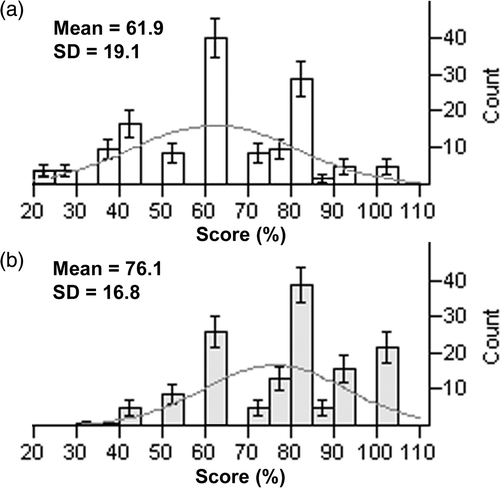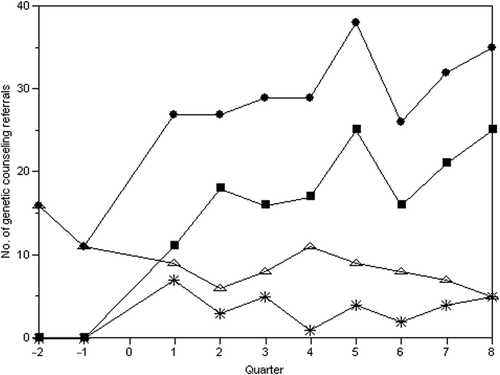Figures & data
Table 1. Quarterly topics for faculty physicians and family practice residents
Table 2. Monthly didactic seminars for family practice residents
Figure 1. Normal distribution of genetic knowledge test scores. (A) Pretests show lower mean scores as compared to (B) post-test scores (n = 143) after an educational program in genetics for primary care physicians. The rectangles represent the count of individuals who received a particular test score (%). The curves represent the normal distribution of the scores. The bars at the top of the rectangles show the standard error of the mean.

Figure 2. Overlay plot of quarterly referrals for genetic counseling. The graph shows the total number of genetic counseling referrals (•) during the two quarters (6 months) before the genetic educational program and over the 2-year period of the program. The number of genetic counseling referrals from primary care physicians who participated in the program (*) remained the same during the 2-year period. The number of referrals from specialists in perinatology (▪) and genetics (Δ) who did not participate in the educational program accounted for most of the genetic counseling referrals. It is important to note that all of the referrals from the perinatologist were from prenatal visits and were referred directly from the perinatologist to the genetic counselor. The number of referrals to the genetic counselor from the perinatologist seemed to increase despite their non-participation in the genetic educational program.

